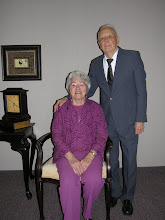America's first Thanksgiving, in 1621, was a three-day celebration of feasting and recreation. The prior year was the Pilgrims' first winter at Plymouth, and it was so harsh almost half of the colonists perished.
By the second harvest, there was reason to rejoice. A peace treaty was signed with the Wampanoag, the Pilgrims' Native American neighbors. And Massasoit, their leader, shared his agricultural expertise, which resulted in a bumper crop. As was common in England, where the Pilgrims originated, they chose to commemorate their bounty with a harvest festival.
Most accounts of the actual event mention neither turkey nor pumpkin, our modern Thanksgiving staples. Indian corn was plentiful, however. Four valiant Pilgrim housewives supervised the feast that Massasoit and 90 of his people attended, bringing five deer as their contribution to the communal table.
Presumable, the Pilgrims followed the English custom of the day and served their neighbors buffet-style; dishes were placed on the table and guests helped themselves. There were no forks, only knives, spoons, and large napkins that were used to pick up hot foods and to tidy the face and fingers. Food could be eaten directly from the serving dish or you could share a trencher (wooden plate). No meal could begin without saying grace, since the Pilgrims believed that their good fortune was due to their relationship to God.
Similar New England harvest festivals evolved into an annual tradition, officially acknowledged in 1777, when the Continental Congress declared the first national Thanksgiving. President Lincoln established Thanksgiving as a national holiday in 1863, after 23 years of lobbying by Sarah Josepha Hale, an acclaimed author and editor.
The regional foods of New England, including turkey, cranberries, and pumpkin, came to be identified with the holiday, as did the inspirational story of the Pilgrims and the Wampanoag tribe feasting and coexisting in peace.
Saturday, November 20, 2010
Subscribe to:
Post Comments (Atom)


No comments:
Post a Comment